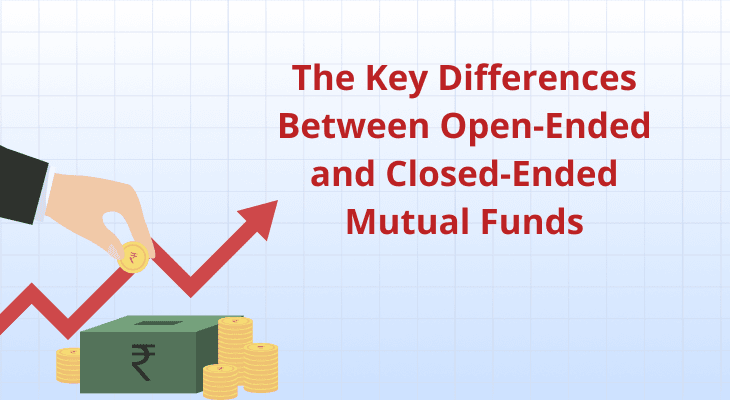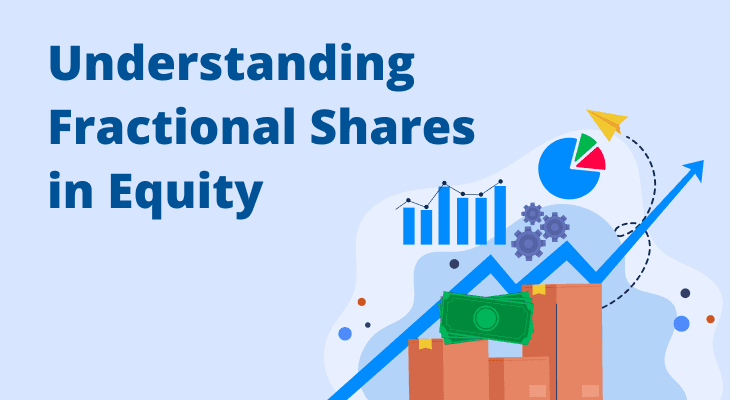
The Key Differences Between Open-Ended and Closed-Ended Mutual Funds
Mutual funds are extremely versatile investment options because of the sheer variety of schemes available. Among the many categories of mutual fund schemes, two popular options based on the structure are open-ended and closed-ended funds. Many beginners may not be aware of the differences between open and closed-ended funds. This makes them prone to mistakes when choosing funds for their portfolio.
If you want to avoid this costly mistake, it’s essential to understand the open-ended vs close-ended mutual funds comparison. Let’s examine each category of funds and then proceed to see how they differ from one another.
What are Open-Ended Mutual Funds?
Open-ended mutual funds are investment options that offer high liquidity and flexibility to investors. In open-ended mutual funds , there is no fixed maturity period. You can buy and sell the units of these funds at any time. They continuously issue new shares and redeem existing units.
You can buy units of the fund directly from the mutual fund company and sell them back to the company as well. The transactions are based on the fund's current Net Asset Value (NAV), which is typically calculated at the end of each trading day. The NAV reflects the value of the fund's assets minus its liabilities, divided by the number of outstanding shares.
This mode of operation means that open-ended funds offer high liquidity due to the ability to buy and sell units at any time (except for brief periods like the settlement period). So, you can typically start or stop investing at your convenience, adjust the amount invested, or even switch between different funds within the same fund house.
What are Closed-Ended Mutual Funds?
Close-ended mutual funds are investment vehicles with a fixed number of shares that are issued through a new fund offering (NFO). Once these shares are issued, no more shares are created or redeemed by the fund house. After the NFO, these funds are listed on stock exchanges, where their units can be bought and sold like stocks. This is a key difference from open-ended funds, which are not traded on exchanges.
Also, unlike open-ended funds, where new shares are continuously created and redeemed by the fund house, close-ended funds do not allow you to redeem your shares directly with the fund at any time. They have a predetermined maturity period that could range from a few months to several years. After this period, the fund is liquidated and you are paid your share of the fund's net asset value.
That said, since close-ended funds are traded on stock exchanges, the prices of the units in the market can be different from their NAV. This is because market price is determined by supply and demand factors among investors.
Difference Between Open-ended and Close-ended Mutual Fund Schemes
For more clarity about open-ended vs close-ended mutual funds, you may need to look at how they compare at a glance. The table below brings out the differences between open-ended and closed-ended funds more clearly.
Particulars | Open-Ended Mutual Fund | Close-Ended Mutual Fund |
|---|---|---|
Liquidity | High liquidity; units can be bought and sold at any time | Limited liquidity; units can be traded only after a fixed period or at maturity |
Availability | Can be subscribed to and redeemed on a continuous basis | Can be subscribed to only during the initial offer period and redeemed at a fixed maturity date |
Trading | Not traded on stock exchanges; transactions are done at the fund's NAV | Often listed on stock exchanges and can be traded like stocks |
Pricing and NAV | NAV is declared daily; buying and selling happen at the current NAV | NAV is declared, but the market price may vary based on supply and demand if traded on an exchange |
Investment Duration | No fixed investment duration; investors can stay invested for as long as they wish | Have a fixed maturity period (e.g., 3 years, 5 years); investors commit capital for this duration |
Flexibility | More flexible; allows regular investments and withdrawals through SIPs and SWPs | Less flexible; no additional investments or regular withdrawals are allowed post the initial offer period |
Fund Size | Fund size can vary as investors enter and exit the fund | Fund size is fixed; no new units are issued after the initial offering, and units are extinguished at maturity |
Suitability | Suitable for investors looking for flexibility and regular investment options | Suitable for investors willing to lock in their investment for a specific period for potentially higher returns |
Which One Should You Choose?
Now that you know the details of the open-ended vs close-ended mutual funds comparison, you are in a better place to make an informed decision about these two categories of funds. However, if you are still unsure about which type of mutual fund to choose, here are some tips that can help you.
Choose An Open-Ended Mutual Fund If
You seek flexibility in your purchase and redemption decisions.
You prefer liquidity and the option to withdraw funds at any time.
You want to invest regularly through a Systematic Investment Plan (SIP).
You are looking for a fund with no set maturity period.
You want the convenience of buying and selling units at the current Net Asset Value (NAV).
You prefer a fund whose size can adjust according to the investor inflows and outflows.
You are a beginner to mutual funds and require simplicity and accessibility.
You want the option to adjust your investment amount over time.
Choose A Closed-Ended Mutual Fund If
You are comfortable with a fixed investment period.
You don't require immediate liquidity in your investments.
You seek potentially higher returns through a fixed lock-in period.
You are interested in trading fund units on the stock exchange.
You prefer a fund with a fixed corpus and no new inflows or outflows post the New Fund Offer (NFO) period.
You have specific investment strategies that align with the fund's fixed tenure.
You are an experienced investor who is comfortable with market-based pricing of units.
You want to invest a lump sum during the initial offer period.
Conclusion
This sums up the fundamental differences between open-ended and closed-ended funds. You can choose between these options based on your investment goals, liquidity preferences and financial capacity. What’s more, you can also allocate a part of your capital to open-ended funds and close-ended funds respectively. This way, you can obtain the benefits of liquidity as well as sustained long-term investments.
SIPs let you invest small amounts regularly, making it easier to stay consistent with your goals. With time, your money grows faster through compounding, helping you get the most out of your investments. Try our SIP Calculator to see how your money can grow and make smarter plans for your future.


